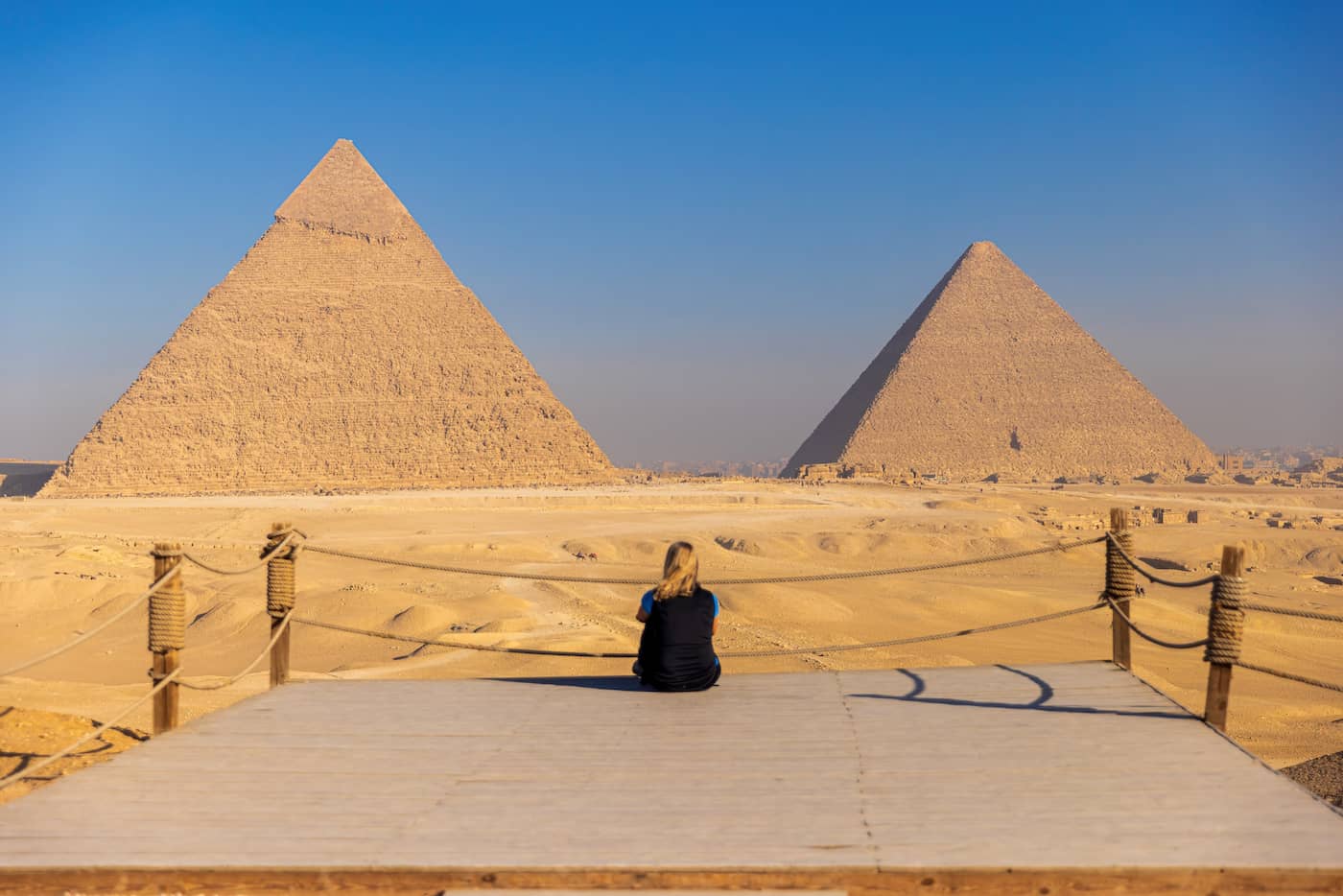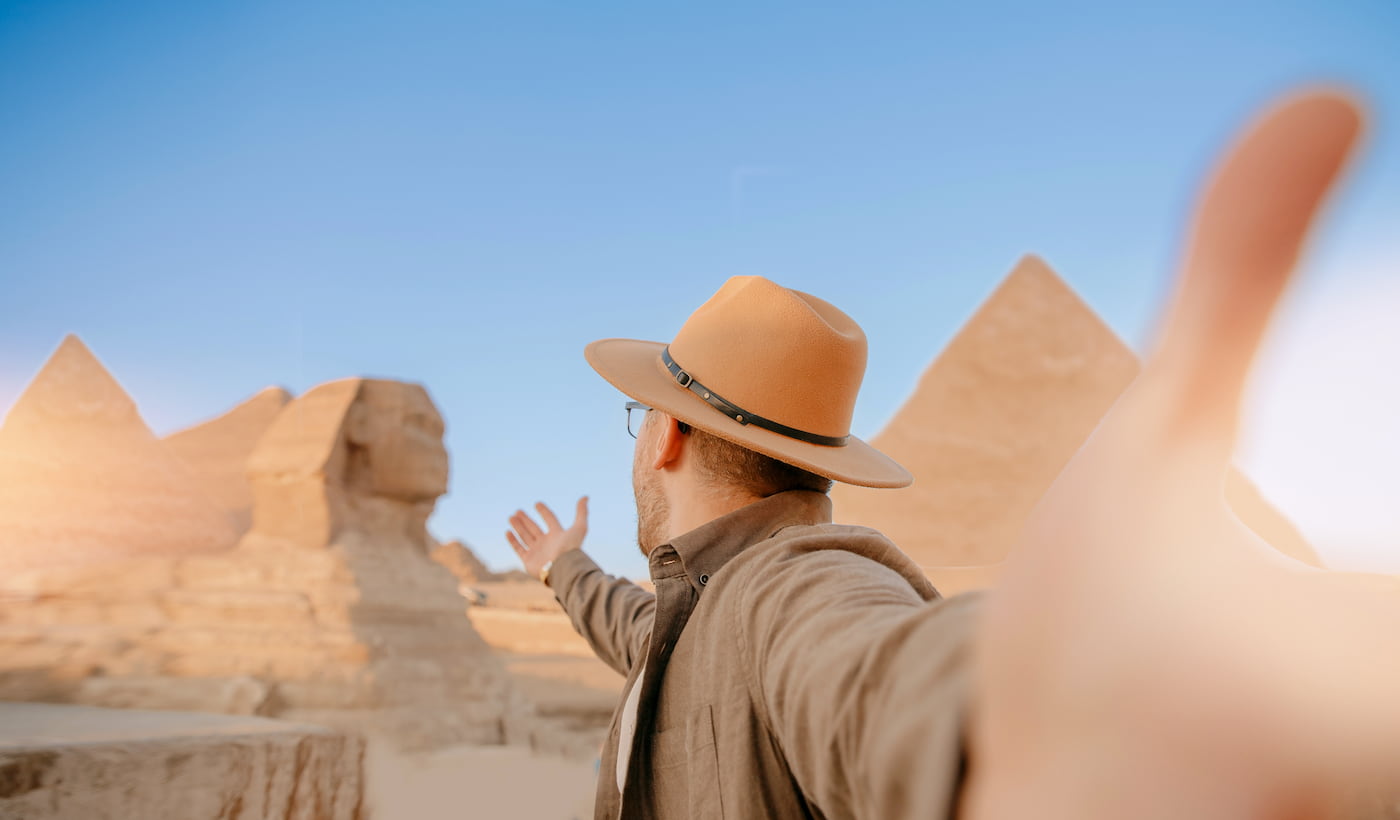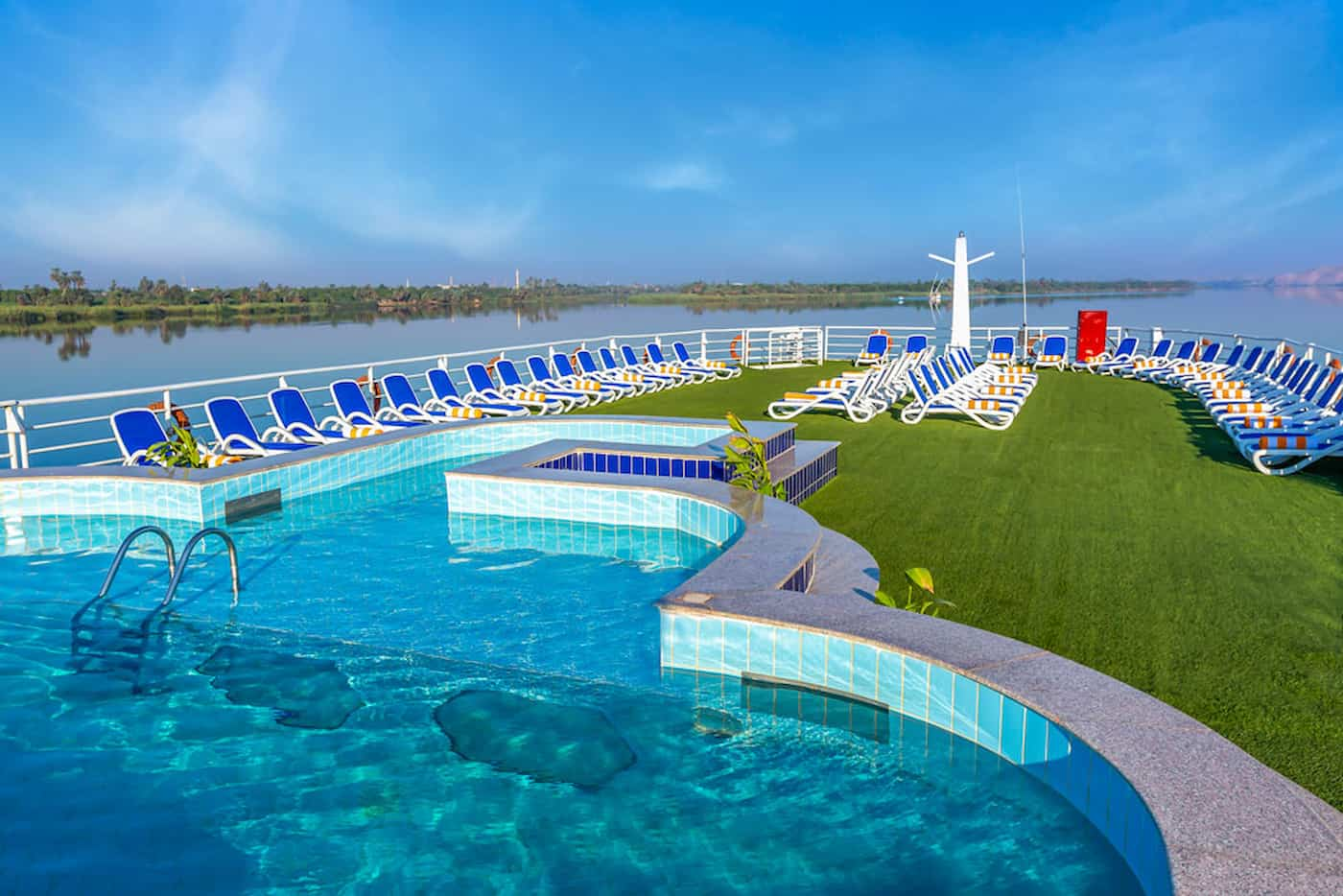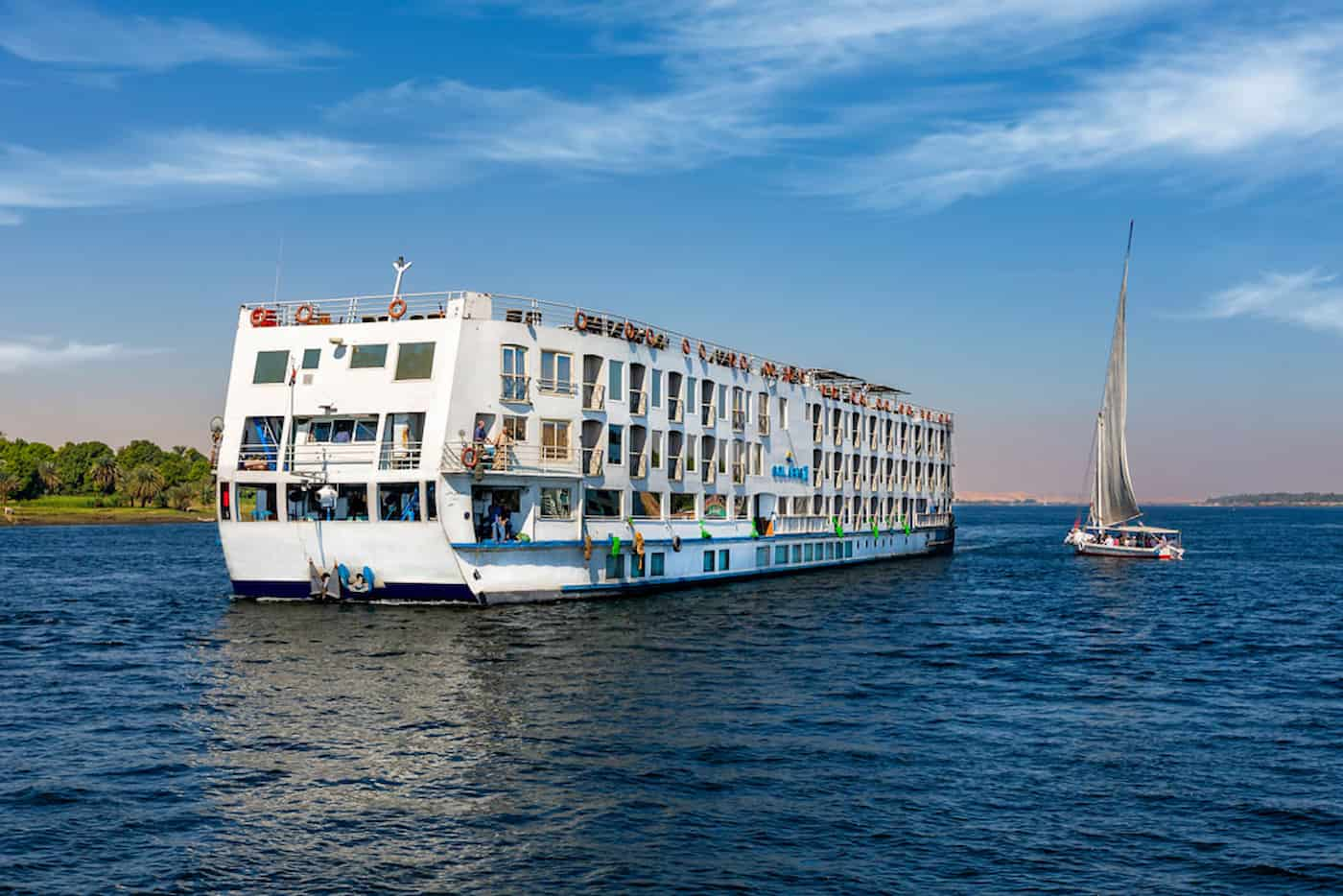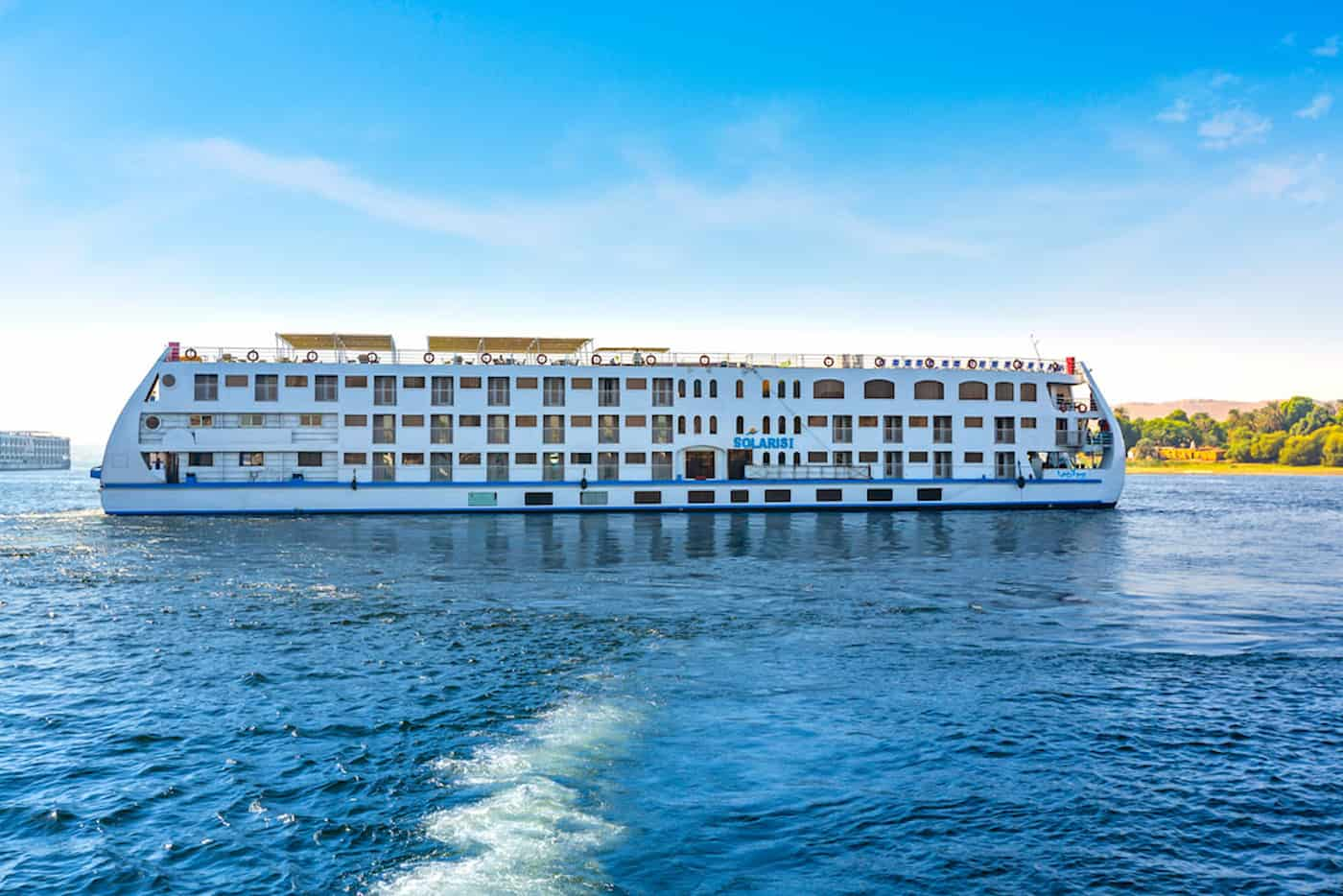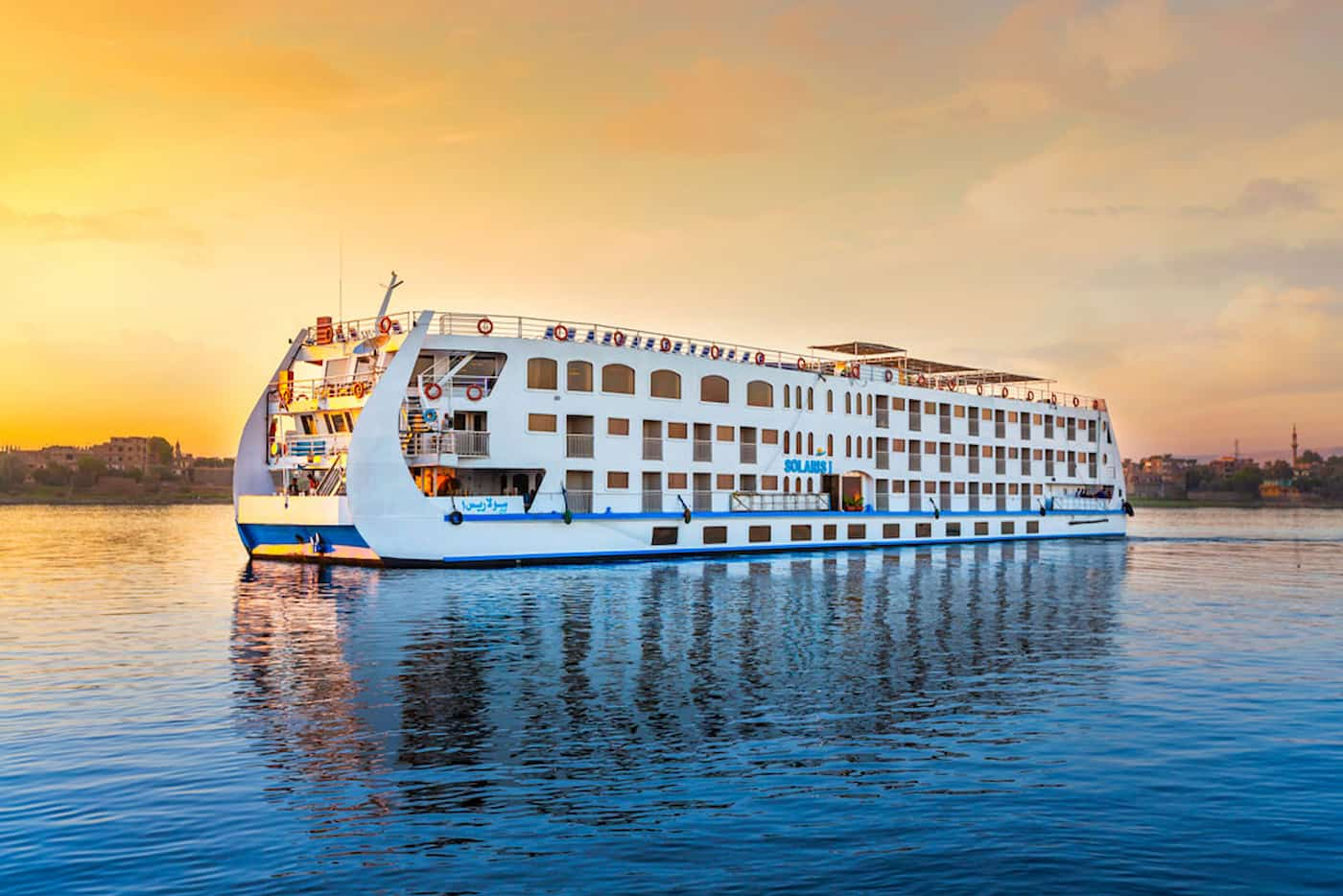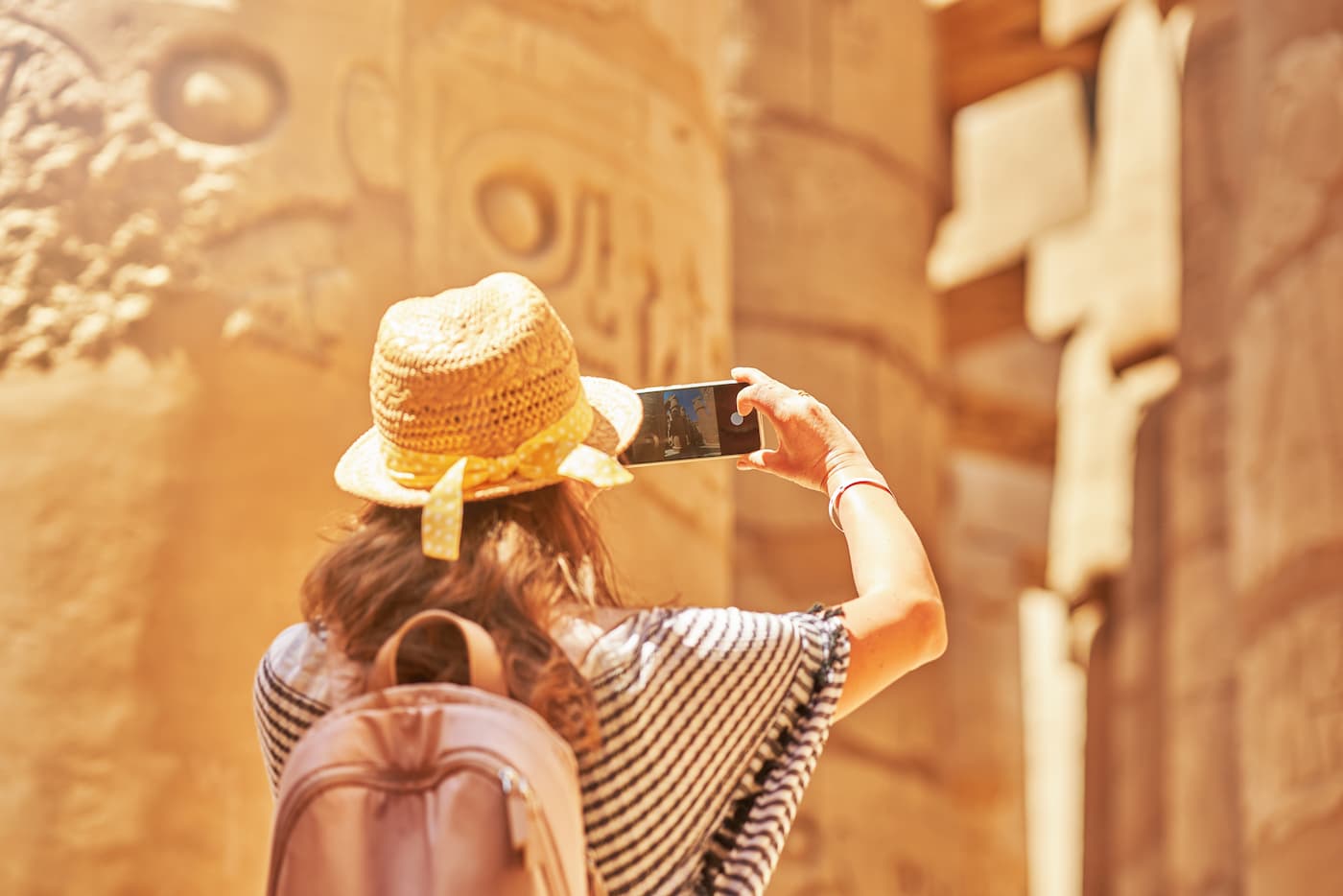Rivers In Egypt: The Nile River, Its Facts, Definition, and History.
There is only one river in Egypt: the Nile. It hasn’t seasonal tributaries in Egypt, although it has two other upstream tributaries: the Blue Nile and the White Nile. These tributaries are in central Sudan.
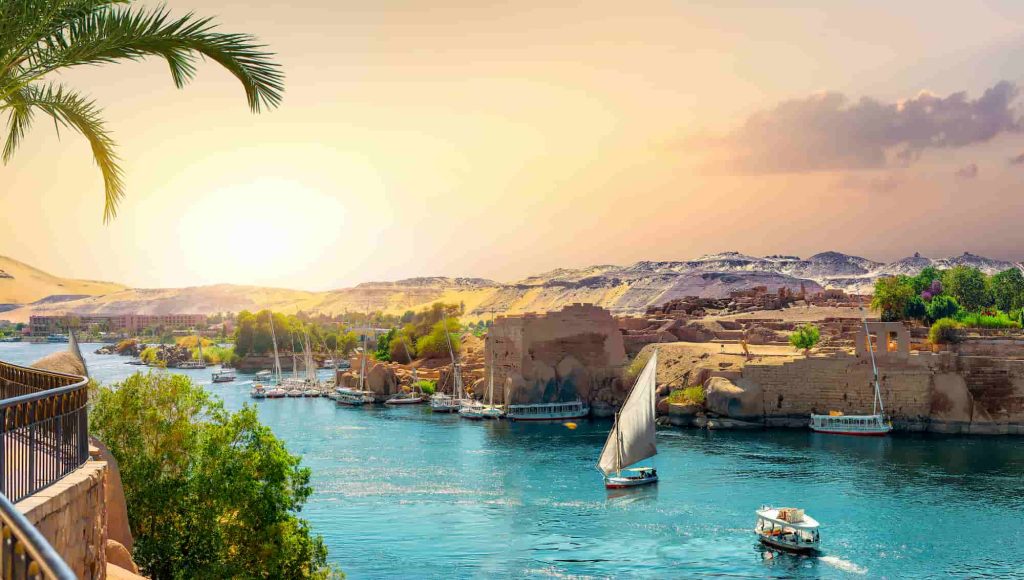
The Nile River
The White and Blue Niles unite at Khartoum to create the Nile River, which receives its last tributary before entering Egypt from the Atbara River that stretches for 800 km (500 mi). The Atbara River originates from the Ethiopian Highlands, which lie north of Lake Tana, before it meets the Nile 300 km (200 mi) below Khartoum.
Facts About The Nile and Its Drainage Basin
The Nile River stands as the longest watercourse throughout Africa and across the entire world. The Nile River maintains one of the smallest average annual water flow rates. It extends its length to 6,650 kilometers (4,130 miles).
The Nile River basin spans 3,254,555 square kilometers (1,256,591 sq mi) across eleven countries, including the Democratic Republic of the Congo, Tanzania, Burundi, Rwanda, Uganda, Kenya, Ethiopia, Eritrea, South Sudan, Sudan, and Egypt.
The Nile River serves as the primary water source for Egypt, as well as Sudan and South Sudan. Moreover, it plays a crucial economic role for these three countries because it enables both agricultural production and fishing activities.
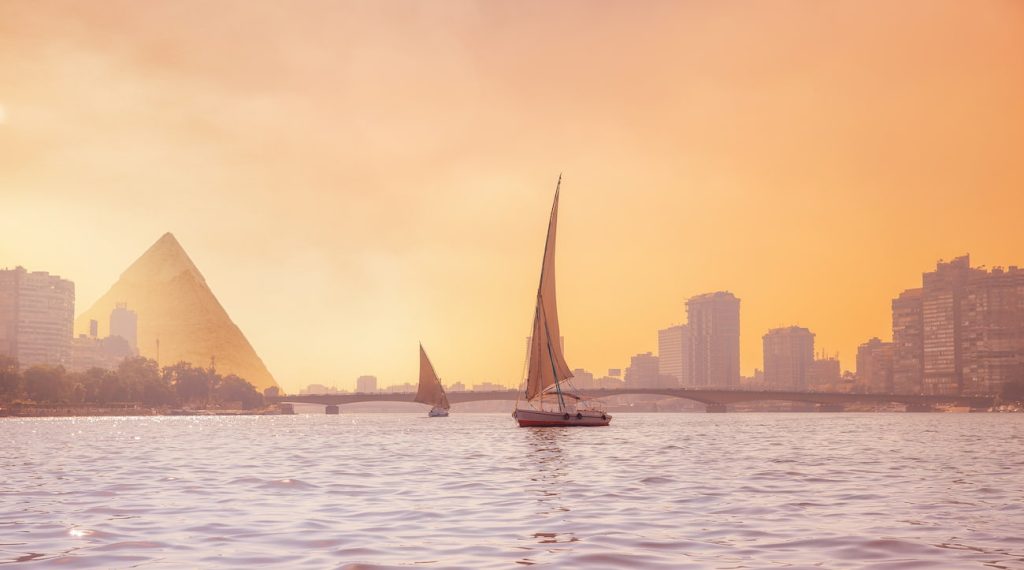
Sunset river Nile
Rivers In Egypt: The Nile River Name
The name “Nile” was from the Greek term Nileos, and from the Greek term Aigyptos, which is the European origin of the Latin name for Egypt (Aegyptus).
The Rivers in Egypt: Nile River course
What are The Blue and White Rivers?
The Nile has two major tributaries. They are the White Nile and the Blue Nile. The White Nile is the longer, and the headwaters stream, while the Blue Nile contributes 80% of the water and silt below the confluence of the two. The White Nile rises in the Great Lakes region. It begins at Lake Victoria and flows through Uganda and South Sudan. The Blue Nile starts at Lake Tana in Ethiopia and flows into Sudan from the southeast. The two rivers meet at the Sudanese capital of Khartoum.
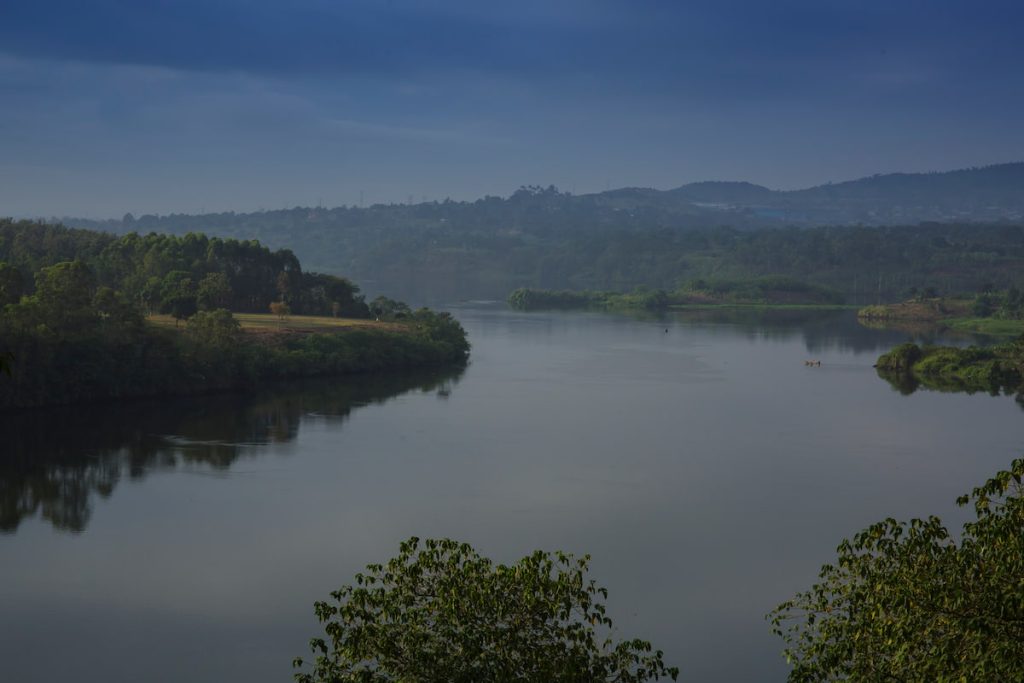
Nile river near lake Victoria
The river flows north after Khartoum and then almost through the Nubian Desert, to Cairo and its large delta to join the Mediterranean Sea at Alexandria. Egyptian civilization and Sudanese kingdoms have depended on the river and its annual flooding since ancient times. Most of the Egyptian population and cities are along parts of the Nile valley north of the Aswan Dam. Nearly all the cultural and historical sites of Ancient Egypt developed and existed along the river banks. The Nile, the Rhône, and the Po are the three Mediterranean rivers with the largest water discharge.
Sources Of The Nile
The Blue Nile originates from Lake Tana, which is located in the Gish Abay region of the Ethiopian Highlands. The Kagera River represents the farthest point where the White Nile originates. The Kagera River has multiple tributaries. The Ruvyironza River and the Rurubu River begin their flow in Burundi.
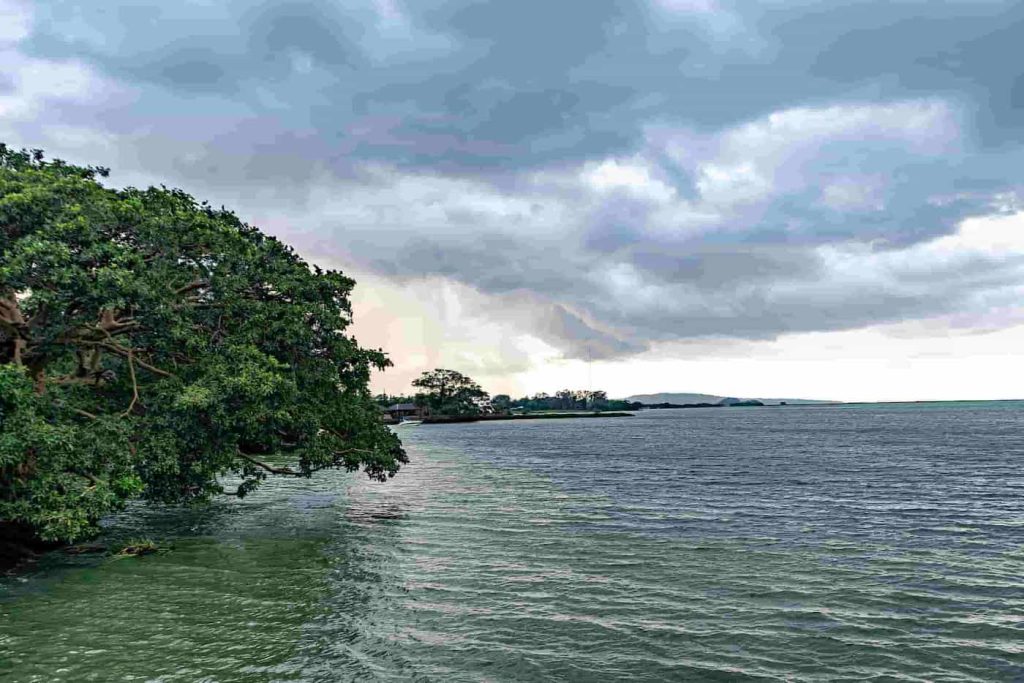
Lake Tana, Ethiopia
In Uganda
The White Nile leaves Lake Victoria at Ripon Falls near Jinja, Uganda, as the “Victoria Nile.” It flows north for some 130 kilometers (81 mi) to Lake Kyoga. The last part of the approximately 200 kilometers (120 mi) river section starts from the western shores of the lake and flows at first to the west until just south of Masindi Port.

Victoria Nile River, Uganda
In South Sudan
The White Nile enters South Sudan. It is known as the Bahr al Jabal. The Bahr al Jabal flows through the southern part of the town, where it meets the Achwa River. The Bahr al Ghazal flows into the Bahr al Jabal at Lake No, which is a small lagoon. The White Nile receives its name from the clay particles that float in its water. The Nile creates a fertile silty layer through its floods, which enriches the soil. The Nile stopped flooding Egypt after the Aswan Dam finished construction in 1970. An anabranch river named Bahr el Zeraf exits the Bahr al Jabal section of the Nile before reconnecting with the White Nile.
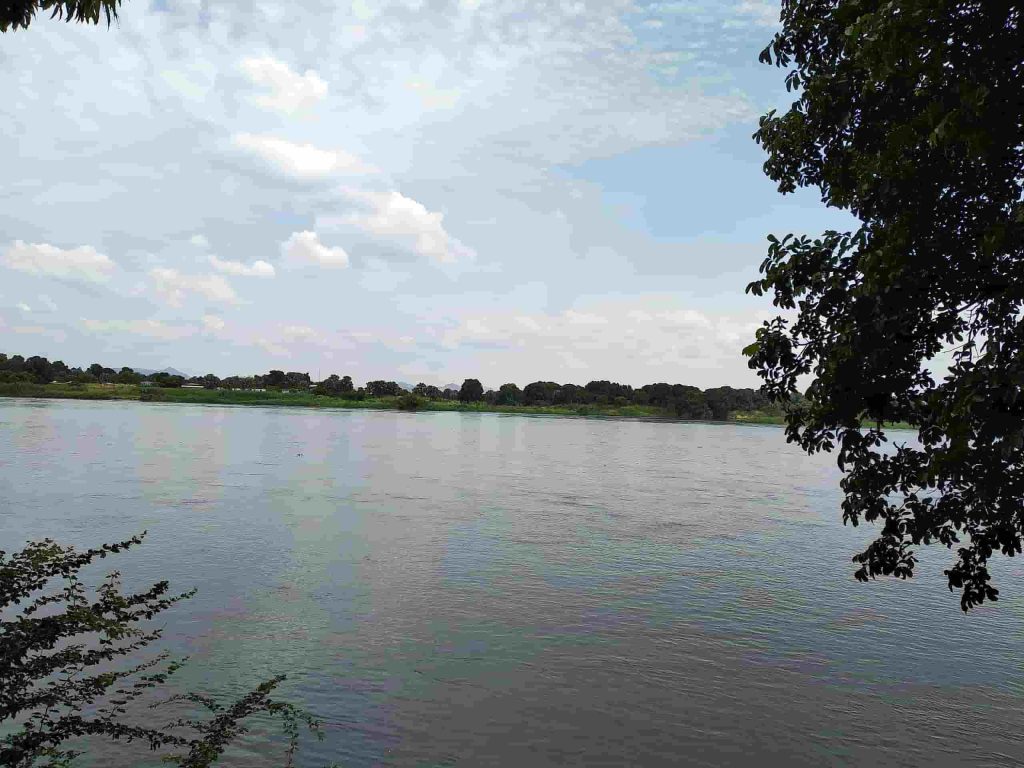
NILE , JUBA, SOUTH SUDAN
The White Nile contributes about 15% of the total outflow of the Nile every year.
In Sudan
The White Nile enters Sudan below Renk. It flows north to Khartoum and meets the Blue Nile. The course of the Nile in Sudan is distinctive. As it flows over six groups of cataracts.
In the north of Sudan, the river enters Lake Nasser (known in Sudan as Lake Nubia), the larger part of which is in Egypt.
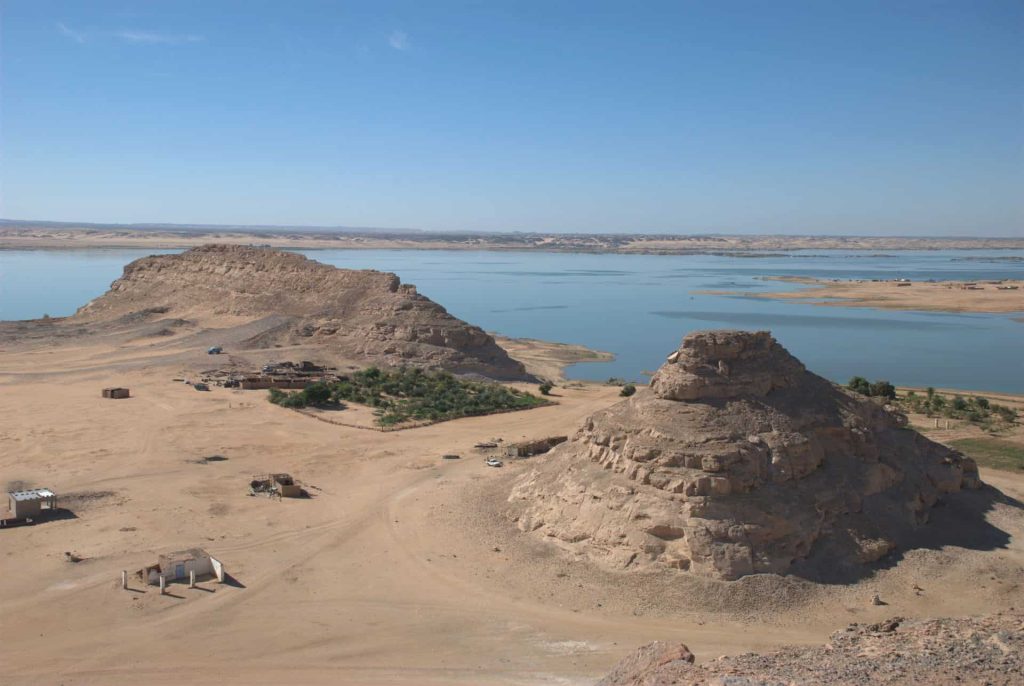
Lake Nubia in Sudan
In Egypt
The Nile completes its historic course under the Aswan Dam at Lake Nasser. The Nile has two branches that feed the Mediterranean north of Cairo: the Rosetta Branch to the west and the Damietta to the east. This forms the Nile Delta.
Economic Importance of The Nile River
1-The Nile And The Agriculture
In ancient times, Egypt’s greatness was due to its agricultural wealth. Thus, the Nile River assumed its position. Agriculture was fully established 4,500 years ago.
Egypt was one of the world’s first major nation-states because of the Nile Valley and Delta 3100 years ago. The Nile and other functional areas also facilitated sports and played an important role in the development of Egyptian thought. The land developed, and its population grew during the Roman era. The important factor was the unity required for agriculture; the revival of the Nile was necessary for development.
The river served as a water source for irrigation, which converted dry land into productive agricultural fields.
The Nile Basin countries depend on its water resources to support their agricultural irrigation needs. The main crops grown in this region include cotton, wheat, sugarcane, dates, legumes, and citrus fruits.
The Nile River transports about 110 million tons of silt each year, with most of it originating from the Ethiopian Plateau. The silt from the Nile River has a major effect on the basin countries because it brings back soil fertility to specific regions along both riverbanks.
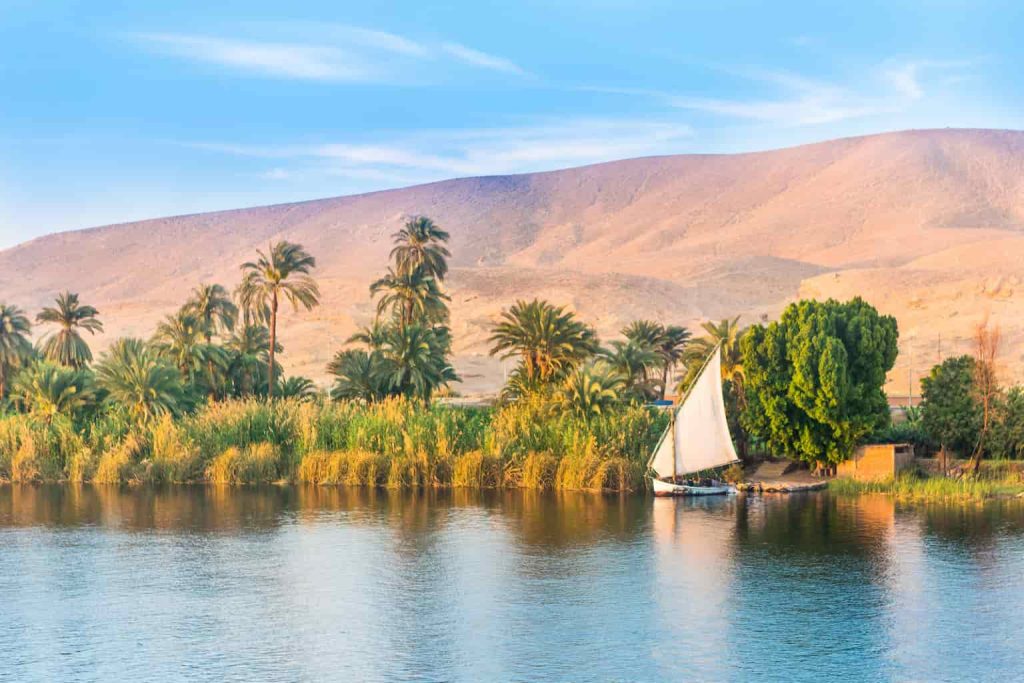
NILE RIVER
Fishermen also rely on the Nile fish available in the river, which is a favorite food for many of the people of these countries. Many species are found there, such as tilapia, common carp, lebbins, bream, gilthead sea bream, tiger fish, stingray, eel, Nile perch, wrasse, and more.
2-Political Influence Of The Rivers In Egypt.
The Nile River was a magnet, contributing to Egypt’s stability and strengthening its political unity. This increased the possibility of exploiting the land and increased the responsibilities of rulers. Kings controlled agricultural resources through final ownership of the land, taxation of agricultural produce, and administrative measures to ensure agricultural productivity. They were responsible for storing and redistributing crops in the event of failure in previous years.
This centralized organizational system created a labor force that contributed to the construction of massive royal monuments and monumental tombs for the elite. This system also contributed to the construction of the fortresses and pyramids of the Middle Kingdom and, after imperial expansion, the construction of the great temples and tombs of the New Kingdom.
3-The Nile and Tourism
Sudan and Egypt are famous for “Nile tourism “. Felucca (boats) transport tourists and visitors between the Third and Fourth Dams in northern Sudan, Juba and Kosti in the south, and Giza, Minya, Sohag, Qena, Luxor, and Aswan in Egypt.

The Nile River
Nile cruises are popular among tourists. They are from simple to luxurious, with options that include antique wooden steamers, modern ships, and floating hotels.
There are many restaurants along the riverbanks. They offer many kinds of fish and seafood. Statistics for 2010 indicate that Egypt’s revenues from Nile tourism reached $2 billion, almost 14% of the country’s total tourism revenue of $14 billion.
Biodiversity In The Nile
Many different species of organisms live in the Nile River. The most important of these are:
1-Nile Crocodile
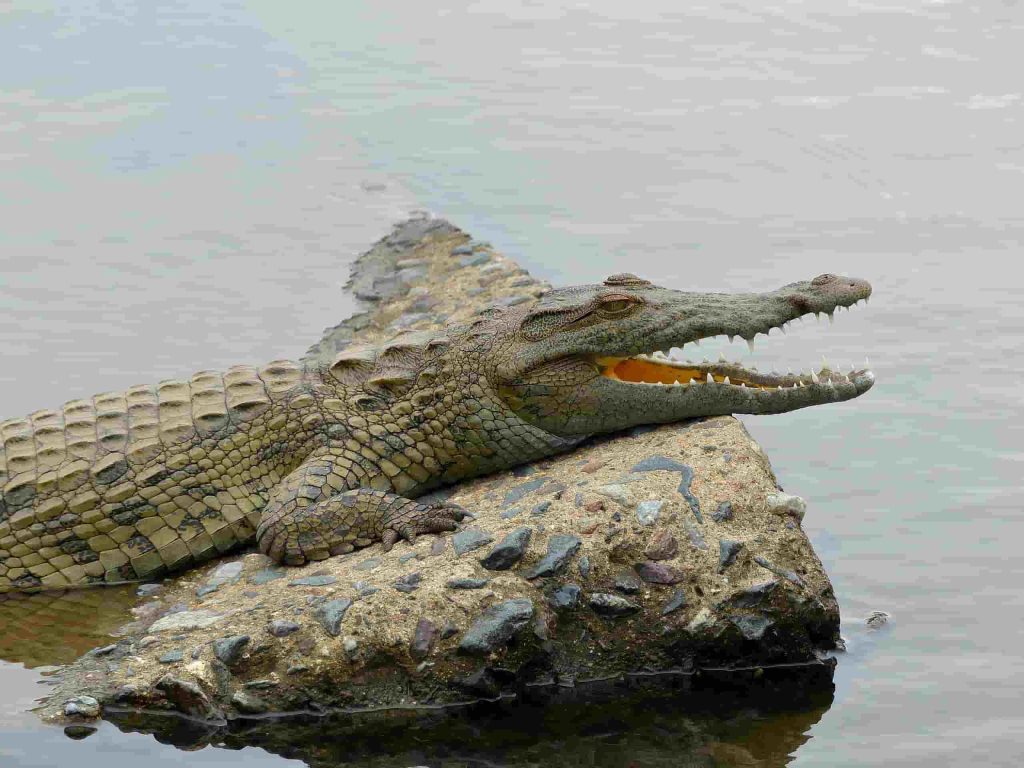
Nile Crocodile
There is the Nile crocodile throughout sub-Saharan Africa. It is found in various types of freshwater environments like lakes, rivers, and swamps. The crocodile can also live in saltwater. It exists in brackish lakes and river deltas, as well as occasionally in the sea near the coast. This crocodile was once a sacred symbol. Mummified crocodiles discovered show that it was worshipped throughout almost all of Egypt.
2-African Frog
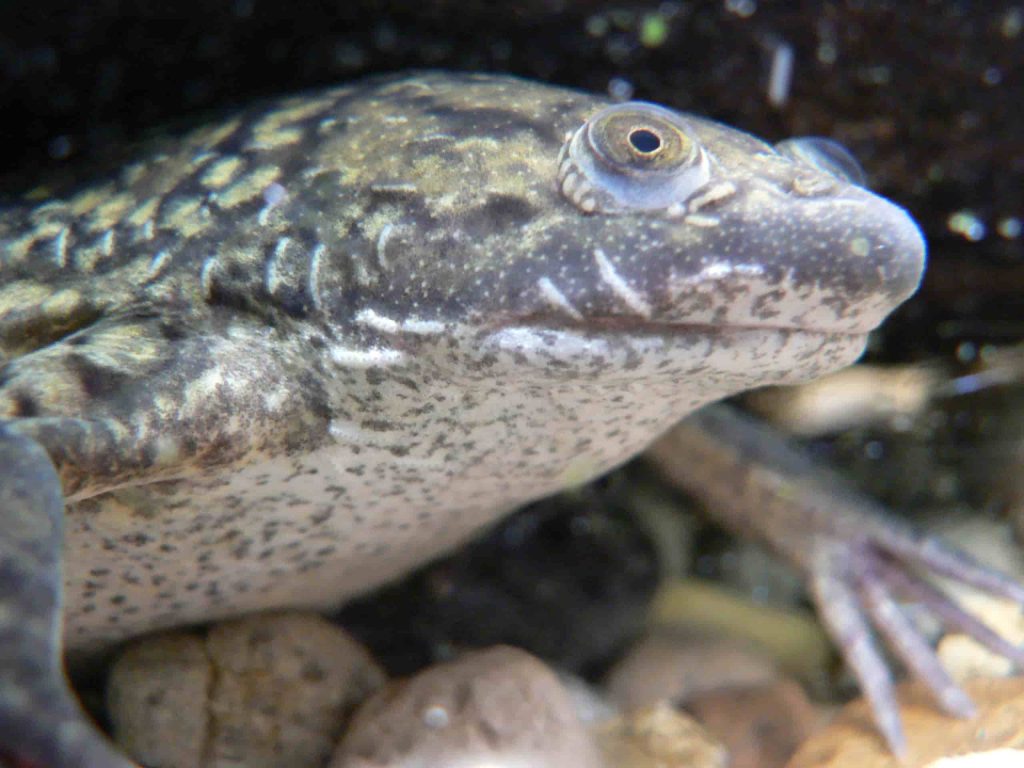
African Frog
Some refer to it as the Nile frog or “mud frog,” while others call it the “Egyptian frog.” Egypt is the primary habitat of African frogs, where they live in calm areas with abundant water. Most frogs living in the Nile River are poisonous and dangerous.
3-Nile dogfish or tigerfish
The Nile dogfish and tigerfish and common mullet, and “African piranha” are other names for this fish, which is one of the largest fish in the Nile River. It has strong jaws and sharp teeth, which enable it to eat meat. Its attacks are frequently recorded, and some fishermen have documented attacks on large animals, such as crocodiles.
This species of fish lives along the banks of the Nile River, although its native habitat is Lake Nasser behind the High Dam. It reaches enormous sizes, sometimes weighing more than 45 kg and reaching a length of about 150 cm.
4-Pufferfish
The pufferfish belongs to the pufferfish family as a genus. The fish expands its stomach into a ball through quick water or air consumption when danger approaches. The inflation mechanism protects the fish from predators. The fish species exists in lengths that span from 5 centimeters to 60 centimeters. The Nile River contains isolated pufferfish populations that inhabit slow-moving waters that range from fresh to salty to brackish. The fish lays its eggs in a side-by-side pattern directly on the river floor. The Nile River played a crucial role in the historical development of ancient Egyptian civilization.
The Nile River served as a vital element that drove the growth and success of ancient Egyptian civilization. Through its agricultural development, the Nile River enabled human societies to thrive. The riverbanks supplied food resources to human populations.
The Historical Importance of The Nile River
The Nile River was one of the most important factors that contributed to the development and prosperity of ancient Egyptian civilization. Moreover, it developed agriculture and the prosperity of human societies. Also, it provided food sources along its banks.

Nile River
The development of the Nile’s water level helped increase the extraction of Egyptian records, accounting, driving instruction, and death certificates. It also contributed to Egyptian expertise in agriculture in a populated area, which led to rapid Egyptian development through agriculture, record-keeping, accounting, and learning hieroglyphics.
The Nile River was one of the most important areas in the country, as it could have been the main route for smart communications and contact with the outside world, especially through direct connections from Egypt to the rest of the world. It also helped develop e-commerce in Egyptian society.
The Modern Importance of The Nile River
The Nile River has many benefits in the modern era. It has played an important role in Egypt, as most of Egypt’s current population exists along the banks of the Nile in Khartoum, Aswan, Cairo, and Al-Qasr, where it supports agriculture, the needs of goods, and people. The food has diversified near the banks of the Nile, due to irrigation and agricultural practices. A wide variety of aquatic life progressed throughout the Nile River ecosystem (Kagera), such as Nile crocodiles, soft-shelled turtles, hippopotamuses, and sea fish such as eels, and many others.
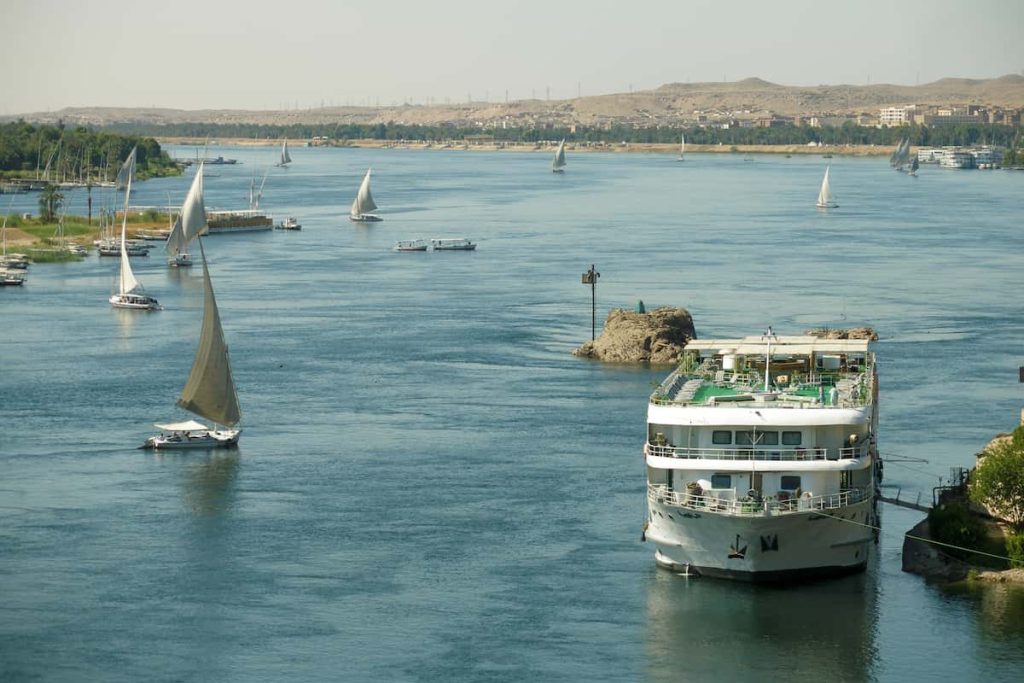
Conclusion
Egypt is the most important civilization in history because of the Nile. Ancient Egyptian culture had physical, political, and spiritual importance. For the ancient Egyptians, the river was the most important element, as the sun rising over the Nile was a majestic sight. The Nile River is the main source of water in Egypt and Sudan in particular. Egypt depends on the Nile for about 97% of its irrigation and drinking water.
The Nile River has played a significant role in our lives since ancient times. It has been an important river since the beginning of history. The ancient Egyptians knew its importance even during the Islamic conquest, when Egyptians relied on it for agriculture, food, and transportation.




